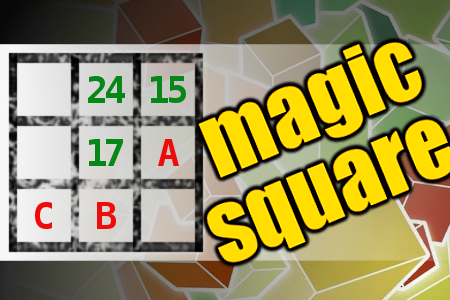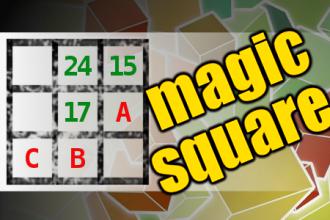MAGIC SQUARE: Calculate A-B+C
The aim is to place the some numbers from the list (5, 6, 8, 14, 15, 17, 24, 25, 27) into the empty squares and squares marked with A, B an C. Sum of each row and column should be equal. All the numbers of the magic square must be different. Find values for A, B, and C. Solution is A-B+C.Correct answers: 11
The first user who solved this task is Nasrin 24 T.
#brainteasers #math #magicsquare


